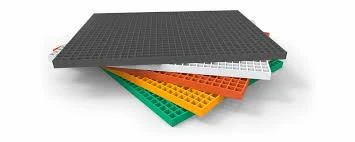
-
 Afrikaans
Afrikaans -
 Albanian
Albanian -
 Amharic
Amharic -
 Arabic
Arabic -
 Armenian
Armenian -
 Azerbaijani
Azerbaijani -
 Basque
Basque -
 Belarusian
Belarusian -
 Bengali
Bengali -
 Bosnian
Bosnian -
 Bulgarian
Bulgarian -
 Catalan
Catalan -
 Cebuano
Cebuano -
 China
China -
 China (Taiwan)
China (Taiwan) -
 Corsican
Corsican -
 Croatian
Croatian -
 Czech
Czech -
 Danish
Danish -
 Dutch
Dutch -
 English
English -
 Esperanto
Esperanto -
 Estonian
Estonian -
 Finnish
Finnish -
 French
French -
 Frisian
Frisian -
 Galician
Galician -
 Georgian
Georgian -
 German
German -
 Greek
Greek -
 Gujarati
Gujarati -
 Haitian Creole
Haitian Creole -
 hausa
hausa -
 hawaiian
hawaiian -
 Hebrew
Hebrew -
 Hindi
Hindi -
 Miao
Miao -
 Hungarian
Hungarian -
 Icelandic
Icelandic -
 igbo
igbo -
 Indonesian
Indonesian -
 irish
irish -
 Italian
Italian -
 Japanese
Japanese -
 Javanese
Javanese -
 Kannada
Kannada -
 kazakh
kazakh -
 Khmer
Khmer -
 Rwandese
Rwandese -
 Korean
Korean -
 Kurdish
Kurdish -
 Kyrgyz
Kyrgyz -
 Lao
Lao -
 Latin
Latin -
 Latvian
Latvian -
 Lithuanian
Lithuanian -
 Luxembourgish
Luxembourgish -
 Macedonian
Macedonian -
 Malgashi
Malgashi -
 Malay
Malay -
 Malayalam
Malayalam -
 Maltese
Maltese -
 Maori
Maori -
 Marathi
Marathi -
 Mongolian
Mongolian -
 Myanmar
Myanmar -
 Nepali
Nepali -
 Norwegian
Norwegian -
 Norwegian
Norwegian -
 Occitan
Occitan -
 Pashto
Pashto -
 Persian
Persian -
 Polish
Polish -
 Portuguese
Portuguese -
 Punjabi
Punjabi -
 Romanian
Romanian -
 Russian
Russian -
 Samoan
Samoan -
 Scottish Gaelic
Scottish Gaelic -
 Serbian
Serbian -
 Sesotho
Sesotho -
 Shona
Shona -
 Sindhi
Sindhi -
 Sinhala
Sinhala -
 Slovak
Slovak -
 Slovenian
Slovenian -
 Somali
Somali -
 Spanish
Spanish -
 Sundanese
Sundanese -
 Swahili
Swahili -
 Swedish
Swedish -
 Tagalog
Tagalog -
 Tajik
Tajik -
 Tamil
Tamil -
 Tatar
Tatar -
 Telugu
Telugu -
 Thai
Thai -
 Turkish
Turkish -
 Turkmen
Turkmen -
 Ukrainian
Ukrainian -
 Urdu
Urdu -
 Uighur
Uighur -
 Uzbek
Uzbek -
 Vietnamese
Vietnamese -
 Welsh
Welsh -
 Bantu
Bantu -
 Yiddish
Yiddish -
 Yoruba
Yoruba -
 Zulu
Zulu
CPVC FRP Pipe Benefits for Industrial Use and Reliability in Harsh Environments
CPVC FRP Pipe A Reliable Choice for Industrial Applications
In the ever-evolving field of industrial materials, the demand for reliable, durable, and cost-effective piping solutions has never been greater. One such product that has gained considerable attention in recent years is the CPVC FRP (Chlorinated Polyvinyl Chloride Fiber Reinforced Plastic) pipe. This innovative piping system combines the advantageous properties of CPVC with the strength and durability of fiber-reinforced plastic, making it an excellent choice for various industrial applications.
The Composition and Benefits of CPVC FRP Pipes
CPVC is a thermoplastic material known for its superior resistance to heat and corrosion, unlike traditional PVC. When combined with a fiberglass reinforcement, the resulting CPVC FRP pipe exhibits enhanced structural integrity and flexibility. This unique combination allows it to withstand harsh chemical environments and extreme temperatures, making it particularly suitable for industries such as chemical processing, power generation, and water treatment.
One of the main benefits of CPVC FRP pipes is their resistance to corrosion. Many industrial environments expose piping systems to aggressive chemicals and abrasive materials. Traditional metal pipes often succumb to corrosion, leading to leaks, breakdowns, and costly downtime. In contrast, CPVC FRP pipes remain resilient in the face of chemical exposure, significantly extending their operational lifespan and reducing maintenance costs.
Additionally, the lightweight nature of CPVC FRP pipes simplifies installation and transportation. Unlike heavy metal piping, these pipes are easier to handle, reducing labor costs and allowing for faster installation times. Their adaptability means they can be used in various configurations, accommodating different industrial setups with ease.
Temperature and Pressure Resistance
cpvc frp pipe a reliable choice for industrial applications ...

Another crucial advantage of CPVC FRP pipes is their ability to withstand high temperatures and pressures. In many industrial processes, transporting hot liquids or gases is essential. CPVC can typically handle temperatures up to 200°F (93°C) while maintaining its structural integrity. This capability, combined with the strength of the fiberglass reinforcement, allows CPVC FRP pipes to be used in applications where metal pipes may fail or require costly insulation.
Moreover, these pipes can handle high pressure applications effectively, making them suitable for industries where pressure fluctuations are common. Their robust construction minimizes the risk of bursting or deforming under extreme conditions, instilling confidence among operators and decision-makers.
Environmental Considerations
In today's industrial landscape, environmental responsibility is paramount. CPVC FRP pipes contribute to sustainability efforts through their durability and reduced need for replacement. Their long lifespan translates to less waste in landfills and lower resource consumption over time. Additionally, CPVC is designed to have a low environmental impact during production and disposal, further aligning it with green initiatives.
Conclusion
In conclusion, CPVC FRP pipes represent a culmination of advanced materials engineering, boasting exceptional resistance to chemicals, pressure, and temperature while providing a lightweight, easy-to-install alternative to traditional piping materials. Their longevity and sustainability further enhance their status as a reliable choice for various industrial applications.
As industries strive for greater efficiency and reduced downtime, the adoption of CPVC FRP piping systems is set to rise. With their numerous benefits, these pipes not only meet the rigorous demands of modern industrial environments but also support businesses in their quest for innovation and sustainability. Investing in CPVC FRP pipes is not just a choice for today but a strategic decision for the future, ensuring reliability and durability in an unpredictable industrial landscape.









